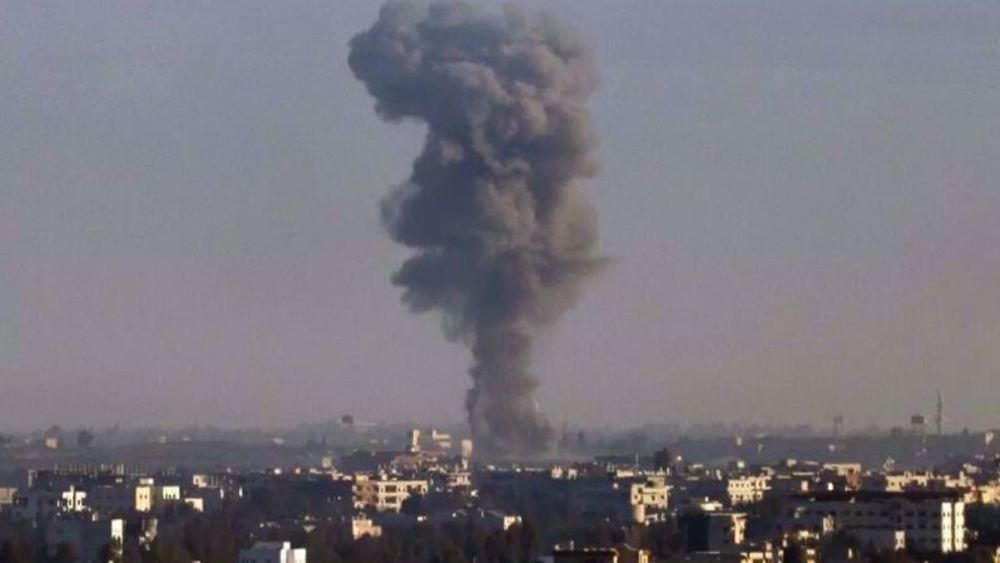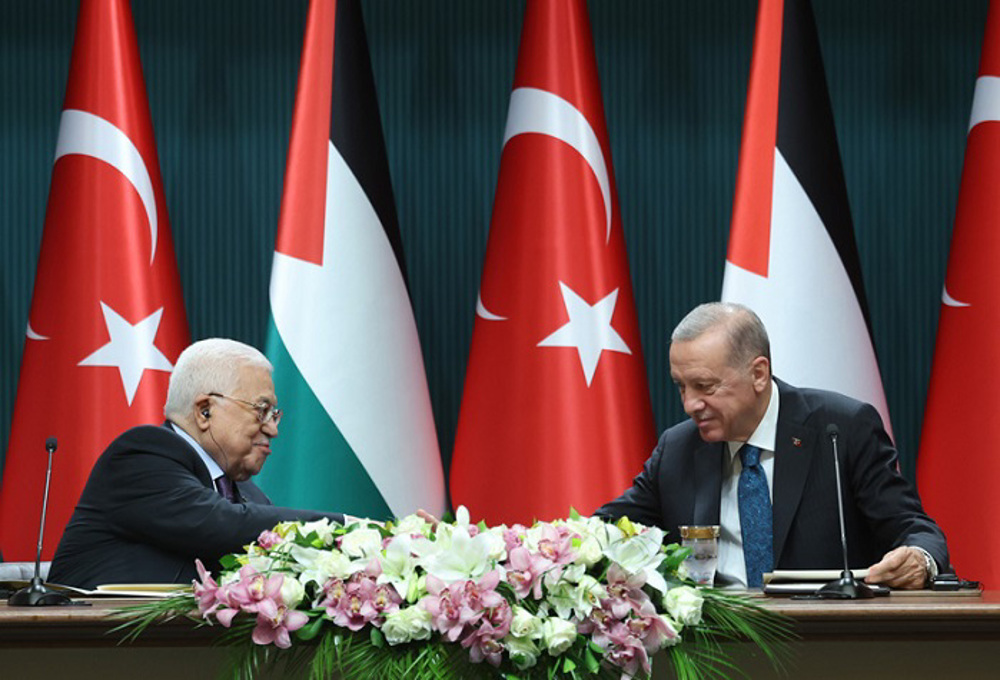Iran medics question reports of Douma ‘gas attack’ ahead of OPCW probe
In light of an alleged chemical attack reported in Douma, the adversaries of the Syria government, particularly those in the West, and the media outlets at their disposal were quick to point the finger of blame at Damascus before any scientific investigation into the incident.
The US, the UK and France used the unconfirmed reports as a pretext to launch a barrage of missile strikes to “punish” the Damascus government. Russia and Syria have rejected the accusations, with Moscow saying it has evidence that the Douma incident was a false flag orchestrated by UK spy services.
Inspectors of the Organisation for the Prohibition of Chemical Weapons (OPCW) are set to launch an investigation at the site of the reported gas attack.
Speaking from experience, medical scientists in Iran, whose people fell victim to chemical arms during Iraq’s eight-year war on the country in 1980s, have raised 10 questions about information released on the Douma incident in media reports, calling on experts to explain the dark points:
1) Why do they insist that another gas was definitely used other than Chlorine and that it was a Sarin type nerve gas? Skeptics would conclude that it was because Chlorine gas and its derivatives are widely used for common household and industrial purposes and are therefore not enough to accuse the Syrian government.
2) They claim that Sarin has been used, but why do they not provide any clear evidence, documentation and clinical signs? Some of the declared clinical signs seem to be copied from ordinary toxicology textbooks or websites and do not reflect accurately our field experiences in the Iraq-Iran war. This is easily distinguishable by experts.
3) There has been a lot of emphasis on the WHO report confirming the use of nerve gas. Firstly, the report was carried out by Health Cluster partners, not WHO specialists in these types of injuries, and secondly, no exclusive pieces of evidence for nerve gas have been noted. All of the clinical evidences mentioned could also result from Chlorine.
4) So far most of the pictures and so-called evidence on the Internet point to Chlorine gas. If we attribute a few to Sarin, there is the question that if the attackers intended to “punish” people and used extensive quantities of Chlorine successfully, why would they then add so little Sarin? If the Saudi-backed Army of Islam militant group carried out the attack, this would make sense. It would probably be due to the fact that they only had access to a small amount of nerve gas and used it for its psychological effect and propaganda impact. It is logical to poison many people with widely available chlorine gas and then use small quantities of nerve gas to accuse the Syrian army.

5) If high concentrations of Chlorine gas are used in an enclosed space, it can cause serious injury and even lead to death. Why do they insist that the severe cases and deaths are due to nerve agents?
6) Blood and Urine samples analyzed by US officials suggested the presence of both chlorine gas and “an unnamed nerve agent.” Why haven’t the analysis reports and scientific details been published and what was the chain of custody? And why is it assumed the “unnamed gas” is Sarin?
7) Why couldn’t the cause of the rapid deaths have been a very simple and deadly compound like cyanide? Is it perhaps because cyanide can be easily produced by the militants, but the production of Sarin is very difficult? If cyanide is declared as the cause of the rapid deaths, the opposition would be accused, but with Sarin the government of Syria can be accused instead. If the Syrian government wanted to “punish” its own people, why not use cyanide instead of Sarin?
This will have two “advantages;” first, the remnants of cyanide are hard to trace in the blood and the environment and second, by not using Sarin they can avoid being blamed.
8) It is strange that those who have collected samples are all looking for signs of Sarin. Why don’t they carry any tests for other deadly compounds like cyanide? Why are they only looking for Sarin? Why were they so confident that they did not pursue other avenues?
9) If we accept the few clinical signs provided on the Internet for nerve gas and Sarin, these signs relate to organophosphate poisoning, and are not unique to Sarin and other military nerve gases. The use of organophosphorous insecticide (especially the undiluted compound), that is widely used for agriculture, can have the same signs and also cause similar deaths as Sarin. Why didn’t anyone check for organophosphorous insecticide used in farming that could have been weaponized?
10) In the recent Skripal case, there is a striking similarity in the narrative. The chemical compound used is Novichok which is allegedly exclusive to the Russian chemical arsenal. When a target can be killed with a compound like cyanide which does not leave any trace behind, why should a compound be used that only one country allegedly produced and had access to in the past? Perhaps to facilitate the process of accusation? This story is oddly similar to the Douma incident in this regard.
‘No symptoms at all’
Medics at Douma’s hospitals have also cast doubt on the reported gas attack, with one of them saying no symptoms of chemical poisoning had been diagnosed in the patients admitted into a hospital on April 7, when the incident happened.
Video clips of the suspected chemical attack showed that children foamed at their mouths in the basement of a severely damaged building.

Marwan Jaber, a medic at one of Douma’s major hospitals, recounted the chaotic situation when the victims of the suspected chemical attack were rushed in, according to Reuters.
“Last Saturday, we received some patients with respiration problems due to the dust, smoke and gravels in the basement they were hiding. We treated them after they were admitted," said Jaber.
However, a group of unidentified people came to the hospital and started to spread panic about a chemical attack although no symptoms of chemical poisoning were diagnosed in the patients, he added.
“Then some injured people and unidentified personnel stormed in and spreading message of chemical attack. People were terrified and a panic was triggered. We diagnosed them, there were no related symptoms," said Jaber.
Although the doctors were unable to stop the unidentified personnel from spreading the allegation, they still tried their best to restore order at the hospital, according to Jaber.
“We calmed everybody down, told them everything is all right. But some people started to spray the patients with water. We told them that everything is normal in fact, but the videos have gone viral, we didn’t know what happened, all the doctors said there was nothing abnormal at the time,” said Jaber.
VIDEO | US fires: Criticism mounts over govt. failure to respond
VIDEO | Fears, hope in Gaza amid intensified ceasefire efforts
VIDEO | Press TV's news headlines
Hamas: Ceasefire agreement result of steadfastness, resistance in Gaza over 15 months
Hamas thanks Iran, Resistance Front following achievement of ceasefire in Gaza
'Capitulation': Israeli officials and media concede Gaza defeat as truce unfolds
'Gaza has won': Social media users react to ceasefire with mix of relief, joy
Iran seeks South Korea’s assistance for AI, fiber-optic projects










 This makes it easy to access the Press TV website
This makes it easy to access the Press TV website